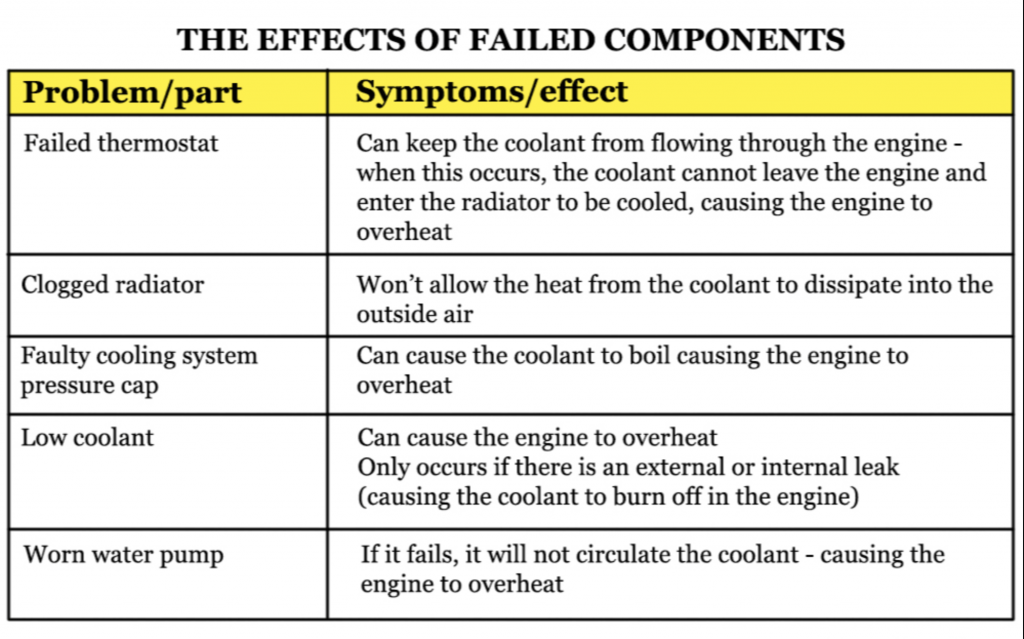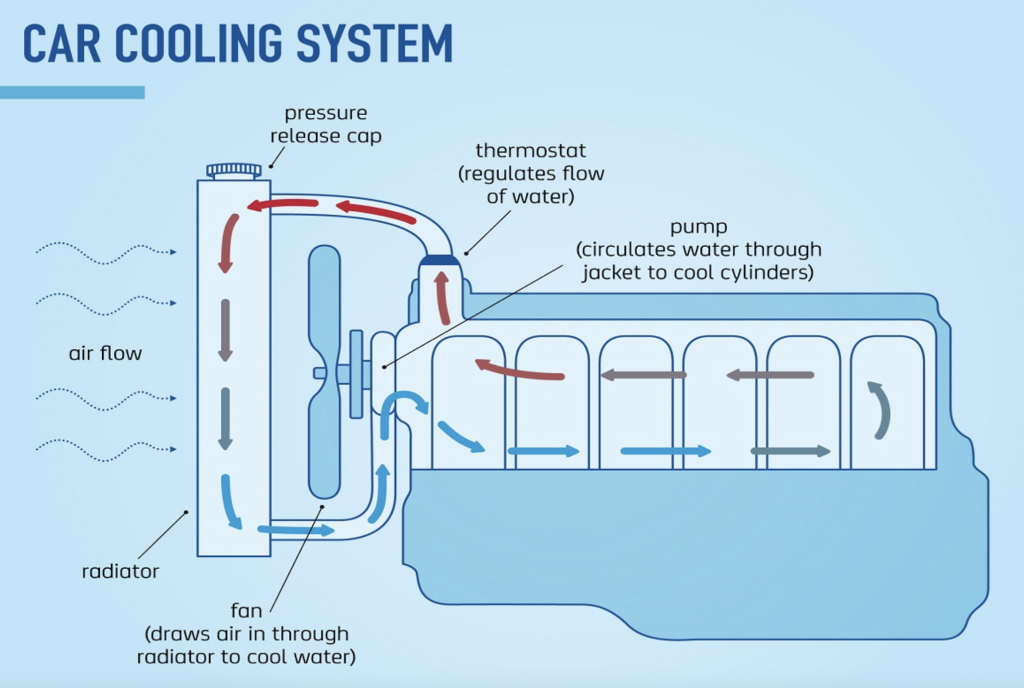Your vehicle cooling system removes excess heat from the engine and keeps the operating engine temperature at an optimal level. If the system is faulty, your engine will overheat and the temperature gauge will begin to rise. If you observe this, you should head to the workshop of a qualified and experienced mechanic. They will find out what is amiss, and their car cooling system repair service will get your engine up and running again.
Signs of a faulty car cooling system
 When the engine of your car overheats, the ‘check engine’ light on your dashboard may give you a warning signal, in addition to your temperature gauge heading towards the red end of the scale. You may also observe that steam is escaping from under your bonnet.
When the engine of your car overheats, the ‘check engine’ light on your dashboard may give you a warning signal, in addition to your temperature gauge heading towards the red end of the scale. You may also observe that steam is escaping from under your bonnet.
If the problem emanates from a leaking coolant, you may observe puddles of a coloured liquid beneath your car within the area where the coolant is leaking. Wet patches of condensed steam may also become noticeable on the surface of your radiator. If you fail to heed these warning signs, you will run the risk of damaging the engine of your vehicle.
Contact a reputable mobile mechanic to fix the problem immediately.
How the cooling system works
When a vehicle engine is running, it generates so much heat that the engine can fail if excess heat is not removed. Several components that make up a cooling system work collaboratively to remove the excess heat, ensuring that the integrity of the engine is maintained. This system is either water-cooled or air-cooled.
- Water cooling system
Most engine cooling systems operate by circulating a coolant, which is usually a mixture of an antifreeze liquid and water, through special cooling passages. This is called a water cooling system. Interconnected cooling channels run through the engine block and its cylinder head. These channels converge at the top of the cylinder head. A pump driven by the crankshaft of the engine sends the coolant through to the top of the engine block from where it is collected and passed on to the radiator for heat exchange.
 The radiator is built with a network of fine tubes that pass through a stack of thin, metal sheets. These provide a large surface area to enable the liquid contained in them to lose heat very quickly. A fan driven by the engine provides a constant flow of air around the radiator.
The radiator is built with a network of fine tubes that pass through a stack of thin, metal sheets. These provide a large surface area to enable the liquid contained in them to lose heat very quickly. A fan driven by the engine provides a constant flow of air around the radiator.
Some cars are fitted with electric fans instead. In this case, a temperature sensor switches the fan on and off, depending on the temperature in the radiator. The cooled liquid returns to the interconnected cooling channels in the engine block via an inlet at the bottom of the block, and the cycle starts all over again.
If excessive pressure is generated within the system, a pressure valve located within the radiator cap opens to allow the coolant to flow out through an overflow pipe. This is a safety mechanism to prevent the extra pressure from damaging the engine. However, it also causes the system to lose some of its coolant whenever the engine gets too hot. It is therefore essential to check the level of the coolant from time to time and top it up when necessary.
- Air cooling system
Some engines are cooled by air. This type of system has the engine block and cylinder head made of deep fins outside the casings. A fan blows air through ducts that run around the fins, removing heat from them. The amount of air blown through the ducts is regulated by a temperature-sensitive valve. This ensures that the temperature in the system is maintained at optimal levels in various weather conditions.
Contact a mechanic near me
Regular maintenance of the car cooling system is essential to extend the lifespan of your car engine. Radiator repairs or replacement can cost you an enormous amount of money with other mechanics, but you can save up to 30% with Beachwheels’ cooling system repair service. Contact us today and get a free no-obligation quote.
